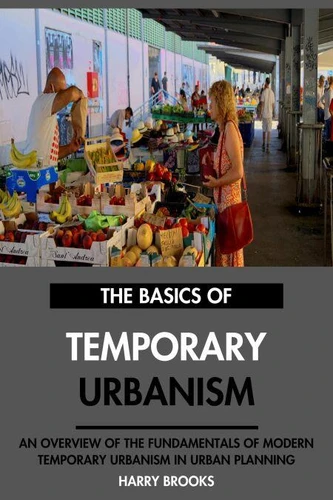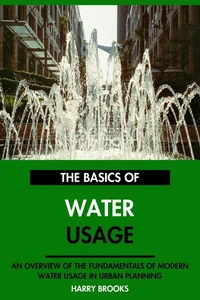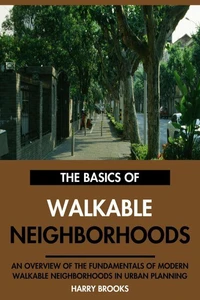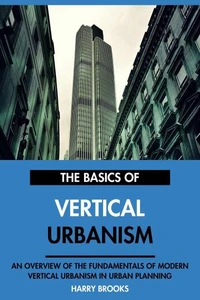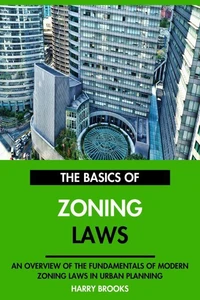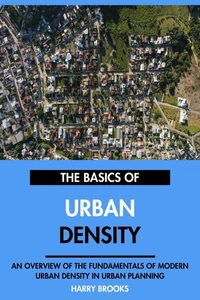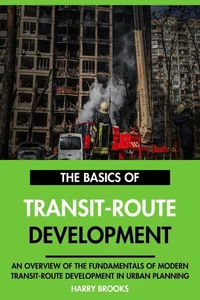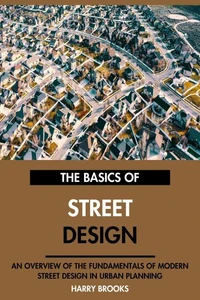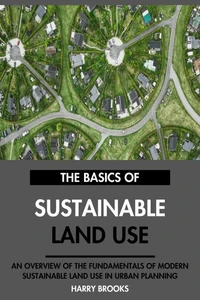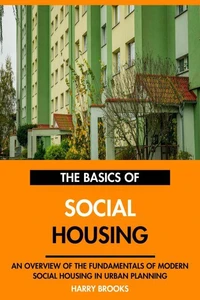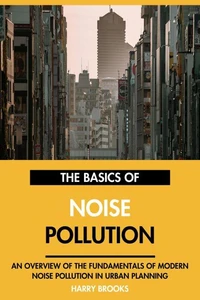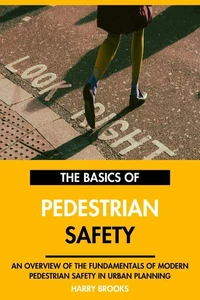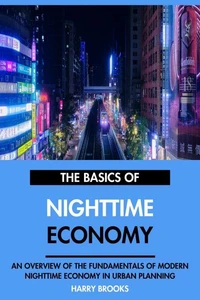The Basics of Modern Temporary Urbanism: An Overview of the Fundamentals of Temporary Urbanism in Urban Planning.
Par :Formats :
Disponible dans votre compte client Decitre ou Furet du Nord dès validation de votre commande. Le format ePub protégé est :
- Compatible avec une lecture sur My Vivlio (smartphone, tablette, ordinateur)
- Compatible avec une lecture sur liseuses Vivlio
- Pour les liseuses autres que Vivlio, vous devez utiliser le logiciel Adobe Digital Edition. Non compatible avec la lecture sur les liseuses Kindle, Remarkable et Sony
- Non compatible avec un achat hors France métropolitaine
 , qui est-ce ?
, qui est-ce ?Notre partenaire de plateforme de lecture numérique où vous retrouverez l'ensemble de vos ebooks gratuitement
Pour en savoir plus sur nos ebooks, consultez notre aide en ligne ici
- FormatePub
- ISBN8231695386
- EAN9798231695386
- Date de parution14/08/2025
- Protection num.Adobe DRM
- Infos supplémentairesepub
- ÉditeurWalzone Press
Résumé
The concept of temporary urbanism has gained significant traction in recent years, as cities around the world seek innovative solutions to the challenges posed by rapid urbanization, economic shifts, and environmental concerns. This eBook aims to explore the multifaceted nature of temporary urbanism, delving into its principles, applications, and implications for urban planning. By examining the fundamentals of temporary urbanism, we can better understand its potential to transform urban spaces and enhance the quality of life for residents. Temporary urbanism is not merely a trend; it represents a fundamental shift in how we approach urban design and planning.
Traditionally, urban spaces have been designed with a focus on permanence, often resulting in rigid structures and inflexible uses. However, as cities evolve and the needs of their inhabitants change, there is a growing recognition of the importance of adaptability and experimentation in urban environments. Temporary urbanism provides a framework for cities to respond to these changes, allowing for the creation of vibrant, engaging spaces that can be easily modified or repurposed. Throughout this eBook, we will explore various aspects of temporary urbanism, including its historical context, key principles, and real-world examples.
We will examine how temporary interventions can address pressing urban issues, such as social isolation, economic disparity, and environmental sustainability. By highlighting successful case studies from around the globe, we aim to inspire urban planners, policymakers, and community members to embrace the potential of temporary urbanism in their own contexts. The importance of community engagement cannot be overstated in the realm of temporary urbanism.
As we will discuss, involving residents in the planning and execution of temporary projects fosters a sense of ownership and pride in public spaces. This participatory approach not only enhances the effectiveness of temporary interventions but also strengthens community bonds, creating a more cohesive and resilient urban fabric. As we navigate the complexities of urban life, the principles of temporary urbanism offer valuable insights into how we can create more inclusive, sustainable, and dynamic cities.
This eBook serves as a guide for understanding the fundamentals of temporary urbanism and its potential to reshape our urban landscapes for the better. We invite you to explore the chapters that follow, each delving deeper into the various dimensions of this exciting and transformative approach to urban planning.
Traditionally, urban spaces have been designed with a focus on permanence, often resulting in rigid structures and inflexible uses. However, as cities evolve and the needs of their inhabitants change, there is a growing recognition of the importance of adaptability and experimentation in urban environments. Temporary urbanism provides a framework for cities to respond to these changes, allowing for the creation of vibrant, engaging spaces that can be easily modified or repurposed. Throughout this eBook, we will explore various aspects of temporary urbanism, including its historical context, key principles, and real-world examples.
We will examine how temporary interventions can address pressing urban issues, such as social isolation, economic disparity, and environmental sustainability. By highlighting successful case studies from around the globe, we aim to inspire urban planners, policymakers, and community members to embrace the potential of temporary urbanism in their own contexts. The importance of community engagement cannot be overstated in the realm of temporary urbanism.
As we will discuss, involving residents in the planning and execution of temporary projects fosters a sense of ownership and pride in public spaces. This participatory approach not only enhances the effectiveness of temporary interventions but also strengthens community bonds, creating a more cohesive and resilient urban fabric. As we navigate the complexities of urban life, the principles of temporary urbanism offer valuable insights into how we can create more inclusive, sustainable, and dynamic cities.
This eBook serves as a guide for understanding the fundamentals of temporary urbanism and its potential to reshape our urban landscapes for the better. We invite you to explore the chapters that follow, each delving deeper into the various dimensions of this exciting and transformative approach to urban planning.
The concept of temporary urbanism has gained significant traction in recent years, as cities around the world seek innovative solutions to the challenges posed by rapid urbanization, economic shifts, and environmental concerns. This eBook aims to explore the multifaceted nature of temporary urbanism, delving into its principles, applications, and implications for urban planning. By examining the fundamentals of temporary urbanism, we can better understand its potential to transform urban spaces and enhance the quality of life for residents. Temporary urbanism is not merely a trend; it represents a fundamental shift in how we approach urban design and planning.
Traditionally, urban spaces have been designed with a focus on permanence, often resulting in rigid structures and inflexible uses. However, as cities evolve and the needs of their inhabitants change, there is a growing recognition of the importance of adaptability and experimentation in urban environments. Temporary urbanism provides a framework for cities to respond to these changes, allowing for the creation of vibrant, engaging spaces that can be easily modified or repurposed. Throughout this eBook, we will explore various aspects of temporary urbanism, including its historical context, key principles, and real-world examples.
We will examine how temporary interventions can address pressing urban issues, such as social isolation, economic disparity, and environmental sustainability. By highlighting successful case studies from around the globe, we aim to inspire urban planners, policymakers, and community members to embrace the potential of temporary urbanism in their own contexts. The importance of community engagement cannot be overstated in the realm of temporary urbanism.
As we will discuss, involving residents in the planning and execution of temporary projects fosters a sense of ownership and pride in public spaces. This participatory approach not only enhances the effectiveness of temporary interventions but also strengthens community bonds, creating a more cohesive and resilient urban fabric. As we navigate the complexities of urban life, the principles of temporary urbanism offer valuable insights into how we can create more inclusive, sustainable, and dynamic cities.
This eBook serves as a guide for understanding the fundamentals of temporary urbanism and its potential to reshape our urban landscapes for the better. We invite you to explore the chapters that follow, each delving deeper into the various dimensions of this exciting and transformative approach to urban planning.
Traditionally, urban spaces have been designed with a focus on permanence, often resulting in rigid structures and inflexible uses. However, as cities evolve and the needs of their inhabitants change, there is a growing recognition of the importance of adaptability and experimentation in urban environments. Temporary urbanism provides a framework for cities to respond to these changes, allowing for the creation of vibrant, engaging spaces that can be easily modified or repurposed. Throughout this eBook, we will explore various aspects of temporary urbanism, including its historical context, key principles, and real-world examples.
We will examine how temporary interventions can address pressing urban issues, such as social isolation, economic disparity, and environmental sustainability. By highlighting successful case studies from around the globe, we aim to inspire urban planners, policymakers, and community members to embrace the potential of temporary urbanism in their own contexts. The importance of community engagement cannot be overstated in the realm of temporary urbanism.
As we will discuss, involving residents in the planning and execution of temporary projects fosters a sense of ownership and pride in public spaces. This participatory approach not only enhances the effectiveness of temporary interventions but also strengthens community bonds, creating a more cohesive and resilient urban fabric. As we navigate the complexities of urban life, the principles of temporary urbanism offer valuable insights into how we can create more inclusive, sustainable, and dynamic cities.
This eBook serves as a guide for understanding the fundamentals of temporary urbanism and its potential to reshape our urban landscapes for the better. We invite you to explore the chapters that follow, each delving deeper into the various dimensions of this exciting and transformative approach to urban planning.

